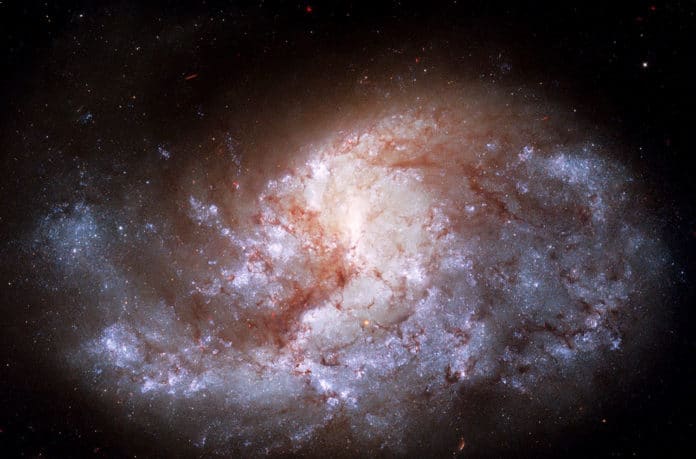When and how medium-sized black holes- between the size of a stellar-mass black hole and a supermassive black hole- form remains unclear. Most of the theories for their formation rely on conditions found only in the very early universe. A new study sheds light on how such medium-sized black holes could form and how they came into being.
The study- led by Vivienne Baldassare, an assistant professor of physics and astronomy at Washington State University– signifies that some intermediate-mass black holes may be located at the center of dense star clusters.
Finding intermediate-mass black holes has proven difficult due to the difficulty in detecting the light emitted by objects falling into them. In this new study, scientists addressed this challenge by looking through X-ray signatures of black holes in nuclear star clusters in 108 different galaxies. They obtained the data from the Chandra X-Ray Observatory.
Nuclear star clusters are the densest known stellar habitats and are located at the center of most small or low-mass galaxies. Although previous research has found black holes in nuclear star clusters, little is known about the specific features that make these locations favorable to black hole formation.
According to the study, nuclear star clusters above a specific mass and density threshold released the X-ray signs of a black hole at twice the rate of those below the threshold. Their findings also give the first empirical evidence that nuclear star clusters can produce intermediate-sized black holes.
Baldassare said, “Basically, it means that star clusters that are sufficiently massive and compact should be able to form a black hole. It is exciting because we expect many of these black holes to be in the intermediate-mass regime between supermassive black holes and stellar-mass black holes with very little evidence for their existence.”
The study also offers a mechanism through which the intermediate-sized black holes can form throughout cosmic time rather than just during the first few billion years of the universe.
Baldassare said, “One of the prevailing theories out there is that massive black holes could only have formed during the early universe when things were more dense. Our research is more consistent with the picture where massive blackholes don’t need to form in the very early universe but could rather continue to form throughout cosmic time in these particular environments.”
Journal Reference:
- Vivienne F. Baldassare et al. Massive Black Hole Formation in Dense Stellar Environments: Enhanced X-Ray Detection Rates in High-velocity Dispersion Nuclear Star Clusters. The Astrophysical Journal, 2022; DOI: 10.3847/1538-4357/ac5f51
